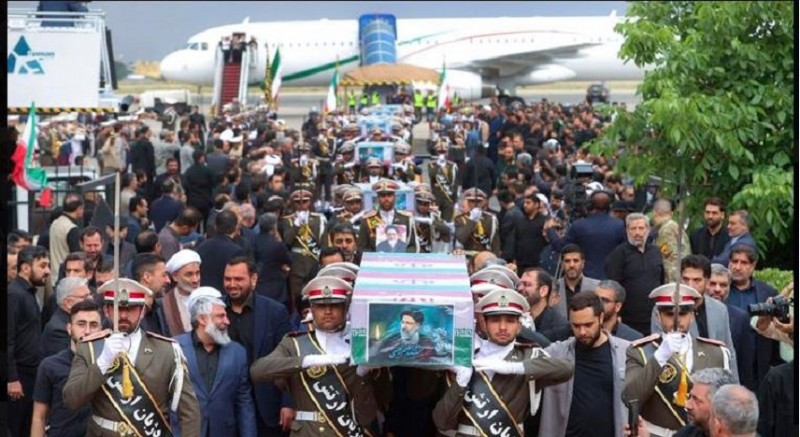
United Arab Emirates - Iran's supreme leader, Ayatollah Ali Khamenei, will preside over a funeral on Wednesday for the country's late president, foreign minister, and others killed in a helicopter crash.
The funeral service will commence at Tehran University, where the caskets of the deceased, draped in Iranian flags adorned with their pictures, will be on display. A black turban, symbolizing direct descent from Islam's Prophet Muhammad, sits atop the coffin of the late President Ebrahim Raisi.
In attendance will be top leaders of Iran's paramilitary Revolutionary Guard, a major center of the country's power. Also present is Ismail Haniyeh of Hamas, the militant group supported by Iran, amid the ongoing Israel-Hamas conflict in the Gaza Strip. Before the funeral, the crowd chanted "Death to Israel!" led by an emcee.
"I come in the name of the Palestinian people, in the name of the resistance factions of Gaza, to express our condolences," said Haniyeh.
He recalled meeting Raisi during Ramadan in Tehran, where the late president emphasized the Palestinian cause as central to the Muslim world. Raisi described the October 7 attack that triggered the conflict, resulting in 1,200 deaths and 250 hostages, as an "earthquake in the heart of the Zionist entity."
Expected attendees at the funeral in Tehran include Pakistan's Prime Minister Shehbaz Sharif and a delegation from Afghanistan's Taliban, including Foreign Minister Amir Khan Mutaqqi.
Following the service, the caskets of the eight deceased will be processed through downtown Tehran to Azadi (Freedom) Square, where President Raisi had previously delivered speeches.
Iran's theocracy has declared five days of mourning following Sunday's crash, encouraging the public to attend mourning sessions. Typically, government employees and schoolchildren participate in such events en masse, driven by patriotism, curiosity, or a desire to witness historic events.
Mass demonstrations have been essential for Iran's Shiite theocracy to demonstrate the legitimacy of its leadership since the Islamic Revolution welcomed Grand Ayatollah Ruhollah Khomeini in 1979, and again during his funeral a decade later. In 2020, an estimated 1 million people attended the processions.
The turnout for Raisi, Foreign Minister Hossein Amirabdollahian, and others remains uncertain, particularly as Raisi, who died in a helicopter crash, won office in Iran's lowest-turnout presidential election and presided over extensive crackdowns on dissent.
Prosecutors have already warned against public celebrations of Raisi's death, and heavy security forces are visible on Tehran's streets since the crash.
Raisi, 63, was considered a possible successor to Iran's supreme leader, 85-year-old Khamenei. His death now leaves uncertainty over the succession, as no heir-apparent cleric is positioned for the presidency ahead of the planned June 28 elections. Iran now has an acting president, Mohammad Mokhber, overseeing a caretaker government in the coming weeks.